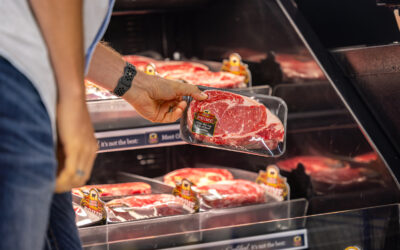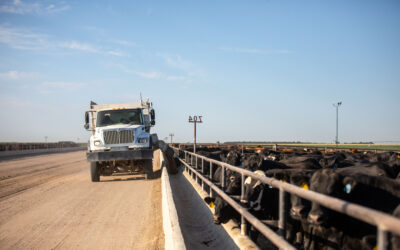
How’d they grade? (Part Deux)
December 27, 2011
Sorry, couldn’ t help myself on the “part deux” thing.
Last time, as a part of the quality grade formula, I wrote about MARBLING. The other component that goes into beef quality grading is: MATURITY! This is a topic upon which I am gathering up more and more experience, although some would say that to call me mature would be a stretch (ask my co-workers…….and sometimes, my wife!)
As animals age, tenderness in their muscle decreases. So, age becomes very important, because with all the marbling in the world, if the animal is 1700 years old, he/she is likely going to be just a skoch chewier than one that is less than 20 months of age. Again, using the Beef Carcass Grading Overview as our guide, one can look at how USDA classifies maturity of beef carcasses:
A – 9 to 30 months of age
B – 30 to 42 months
C – 42 to 72 months
D – 72 to 96 months
E – > 96 months
Most cattle do not arrive at the packing plant with a birth certificate, so how does the grader know how old the animals are? The answers are: skeletal indicators; color of the lean; texture of the lean; and firmness of the lean. The best indicator is probably the skeletal indicators, and generally the most reliable, so I wil discuss that (another subject upon which I have lots of personal experience).
As an animal matures, the cartilage in in the carcass gradually turns to bone (in my case, my brain was cartilage, then turned to bone, thus the term “bonehead” was born, but I’m off subject now). This process begins near the rump of the carcass and progresses down the vertebral column towards the shoulder. This “ossification” process is key to correctly estimating carcass maturity. The cartiligenous “buttons” that are at the tip of the chine bone (near the top edge of the carcass) after it is split into two halves, turn from a bright, “pearly-white” color to hardened bone.
Now, a carcass with “A” or “B” maturity, can, in general, qualify for Prime or Choice, the top two quality grades. However, once we get into the low choice (Small 0 score for marbling to Small 99) if that carcass is a “B” maturity, it will go as Standard, or no-roll, as we discussed last time. Animals in the “C”, “D”, and “E” maturity scores, despite the marbling, will only grade “Commercial”, “Utility”, “Cutter”, or “Canner” grades. Since most slaughter steers and heifers are marketed at less than 30 months of age, and in most cases, 16 to 22 months of age, this is not an issue. Those lower quality grades are usually discussed in the same breath with cull cows and bulls. You will NOT find those lower quality grades in most grocery stores or at your retail counter. You will likely find lots of Standard carcasses in institutional environments. Some discount steak houses will utilize them as well. Keep in mind that many branded beef programs, such as Certified Angus Beef, will only accept “A” maturity carcasses to ensure high consumer acceptance for appearance, tenderness, and flavor.
One must keep in mind that skeletal maturity is not an exact science. Implants may affect how quickly a carcass shows maturity; it can speed up the aging process in some instances. Gender makes a difference, and sometimes a heifer will actually be younger than what her skeleton says she is. Heiferettes are a prime example: you may get one that is called a “B” bone but she may only be 24 months (this happened to me once……well, my heifer, actually, not me) and had I had age and source verification, I could have gone back to the plant and proved my point with the paperwork, but that probably would have been avoided had I had that documentation.
So, remember: M&M……marbling and maturity are the two parts of the Quality Grade education. Next time: Yield Grades! I’ll bet you can’t wait! I know I can’t.
Until then, Adios!
You may also like
Purpose Follows Passion
A chance opportunity. A change in career direction. And meat science was changed forever. Dr. Gary Smith originally had no plans to become a meat scientist. But thank goodness he did.
CAB Sets Sales Records, Sees Historically High Brand Acceptance Rates
In an otherwise tough time in the beef business, sales and supply records have been a bright spot. The positive numbers mean that quality beef production has not let up, and beef demand is holding. Consumers have proven the value proposition: the good stuff is worth a little more money, for a better eating experience.
Feeding Quality Forum Dates Set Earlier in August
When you’re feeding cattle, it counts to keep track of every calf, pound and dollar. Beyond the event’s educational sessions, networking between segments of the beef supply chain is invaluable—from feeders and cow-calf operators to allied industry and university researchers.



